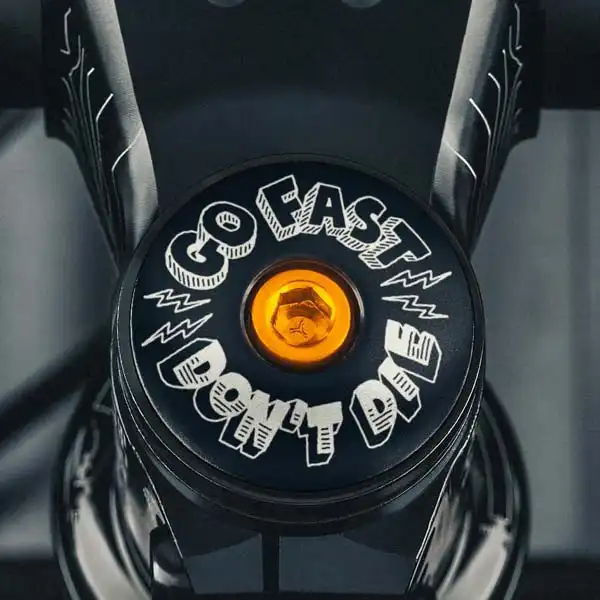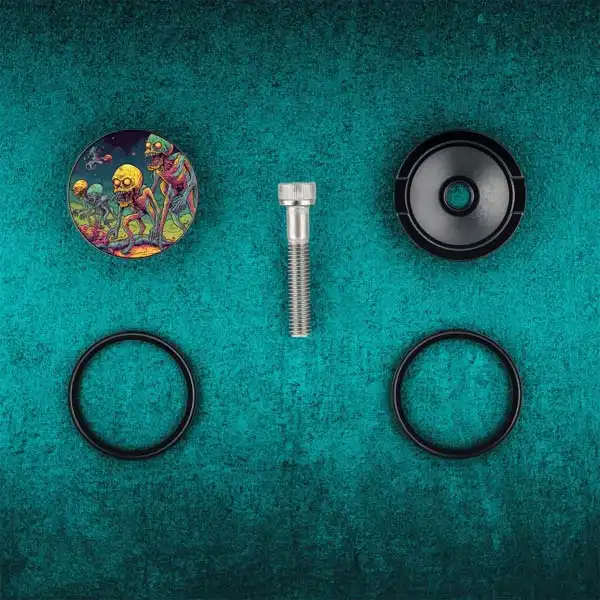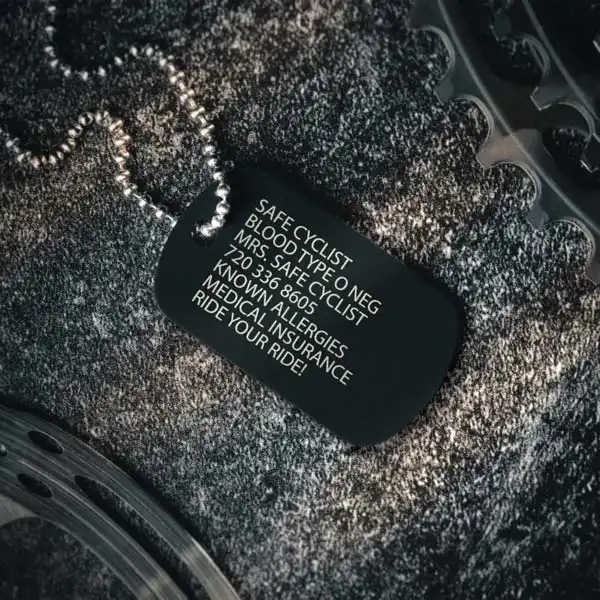
How to Change Your Bicycle Headset Cap
What's not to love about a bicycle? They are a great way to get around, exercise, and enjoy some time with yourself or friends. Of course, they are a ton of fun, too. If you're like most people, you probably enjoy taking your bike out for a spin on the weekends. However, if you've been riding your bike for a while, there's a good chance that you'll want to customize your bicycle. Changing your bicycle headset cap (or stem cap) is the easiest and most affordable way to make your bicycle yours.
In this blog post, we will show you how to change your headset cap in a couple of simple steps.
Let's get started with some basics.
What kind of headset are we talking about?
First, what we're discussing today is called a “threadless” stem. This is type of stem is a design in which your bicycle's fork steerer tube extends through the head tube. From there a stem clamps around the outside of the steerer tube holding it safely in place and allowing you to attach your handlebars to steer your bicycle.
The headset cap is the small, round cover that sits on the top of your bicycle's head tube. It is usually made from aluminum, plastic or brass and it is used during installation to set a preload on your cockpit assembly. Afterwards, it's largely aesthetic. In fact, what we see is one amazing place to customize your bicycle and make it truly yours.
What are bicycle spacers used for?
Often metal or carbon fiber spacers will stack between the stem and the head tube to make a more comfortable fit of the rider. They come in a wide range of sizes from 2.5mm to over 20mm. These rings sit between the stem and the head tube and slide over the steerer to customize the stack height for the individual rider's specific needs.
If you don't know how many you require, a proper bike fitting can help. These seemingly small adjustments can help with rider comfort, control and even help avoid pains and injuries.
What does a headset cap do?
The headset cap is used to adjust the preload in your headset bearings. It does not keep your stem or fork in place. It's primarily designed to keep everything in place during installation or headset adjustment.
A headset cap (or stem cap) is not a structural part of the cockpit. When it comes time for tightening your headset cap bolt, do not overdo it. Over-tightening can lead to damage to your headset, snapped bolts and generally is simply unnecessary.
It's a common mistake to try to tighten a headset cap when you experience a loose cockpit. Generally this does not solve the issue the rider is facing. Properly tightening the bicycle cockpit will require a loosening of the stem and then small adjustments to the bicycle headset cap to compress everything back into place. Again, not too tight or you risk damage. You simply want to draw all the bicycle headset components, the steerer and the stem into a tight stack. Then re-tigthen your stem clamp bolts.
The bicycle headset cap does also serve a rider from potential injury by covering the top of the cut steerer tube. Should an accident occur, some argue the stem cap cover will reduce the number of potential spots a puncture wound could be caused.
What does a bicycle headset cap really do?
What we think a bicycle headset cap really does is provide an amazing place to add some customization to your bicycle.
In the U.S., approximately 17 million bicycles are sold each year. Customizing your bicycle stem cap gives you a chance to make your bicycle one of one. From funny images to motivational messages, it's a great place to make a simple and affordable upgrade to your bicycle.
Just get used to hearing from your riding buddies, "Where did you get that headset cap?"
Tools needed to change a bicycle headset cap
This is a really simple process, so let's start with the tools you'll need to change your headset cap.
What You'll Need:
- Bicycle headset cap or stem top cap
- Allen wrench set (typically a 4mm Allen wrench)
- Hex wrench set (less common, but in case your headset cap bolt is a hex pattern)
- A thin flat head screwdriver
Replacing your bicycle headset cap: The Procedure
Replacing your bicycle headset cap is a very easy process. All you need is a few simple tools and about 3 minutes of time. Here's how to
Once you have gathered your tools, it's time to get started. The first step is to remove the old bicycle headset cap. This can be done with either a hex key or an Allen wrench.
Next, you'll need to remove the old bicycle headset cap bolt. This is usually accomplished with an Allen wrench of the appropriate size. In most cases, it's a standard four-millimeter Allen wrench. (This is also the size used for our headset cap bolts.)
With your headset cap bolt removed, you can take off your old headset top cap. If it's stuck, a flat head screwdriver can be used to pry it loose. (Use care to not damage any of the surrounding parts of the cockpit.)
Once you have removed your old bicycle headset cap (or stem top cap), simply install your new Dispatch Custom Cycling Components headset cap in its place. Thread your new bolt through the star nut and tighten. Remember, do not over tighten the bicycle headset cap bolt. You simply want to evenly compress all of your bicycle headset parts into a tight stack.
As an added layer of prevention, add some threadlocker onto the threads of your new bicycle headset cap bolt to keep it from backing out on the trail or tarmac.
You're done! You've just replaced your bicycle headset cap!
Now go enjoy a ride and admire that sweet new custom bicycle headset cap!
Dispatch Custom Cycling Components
At Dispatch Custom Cycling Components we want you to ride your ride. We specialize in affordable custom bicycle components, including headset caps, bar end plugs and small parts that we feel help us on our mission to keep the love for your bicycle going, put more people on bikes and make the world a better place.
Based in Colorado, USA, we're proud to have inspired tens of thousands of customers ride their ride.









